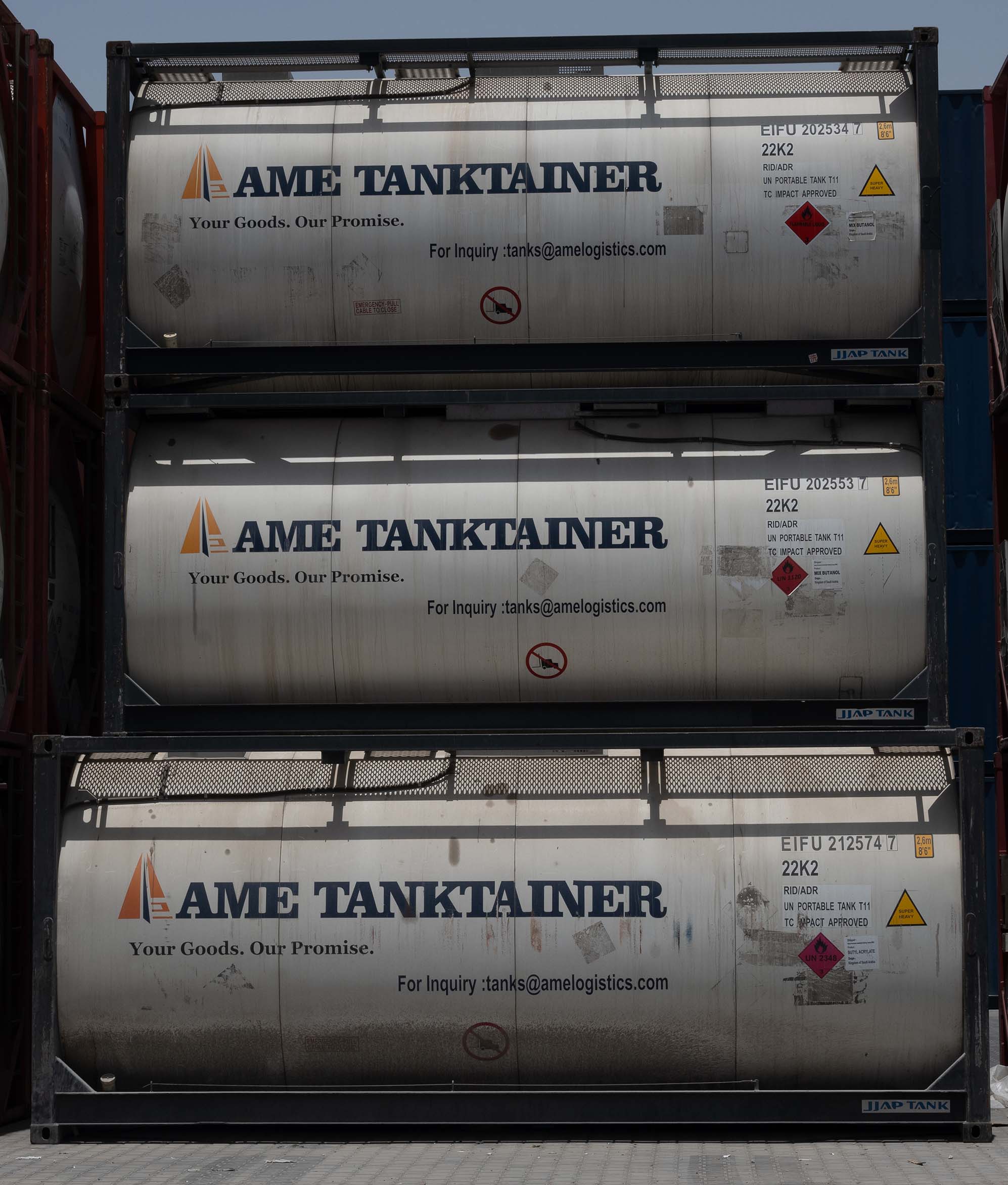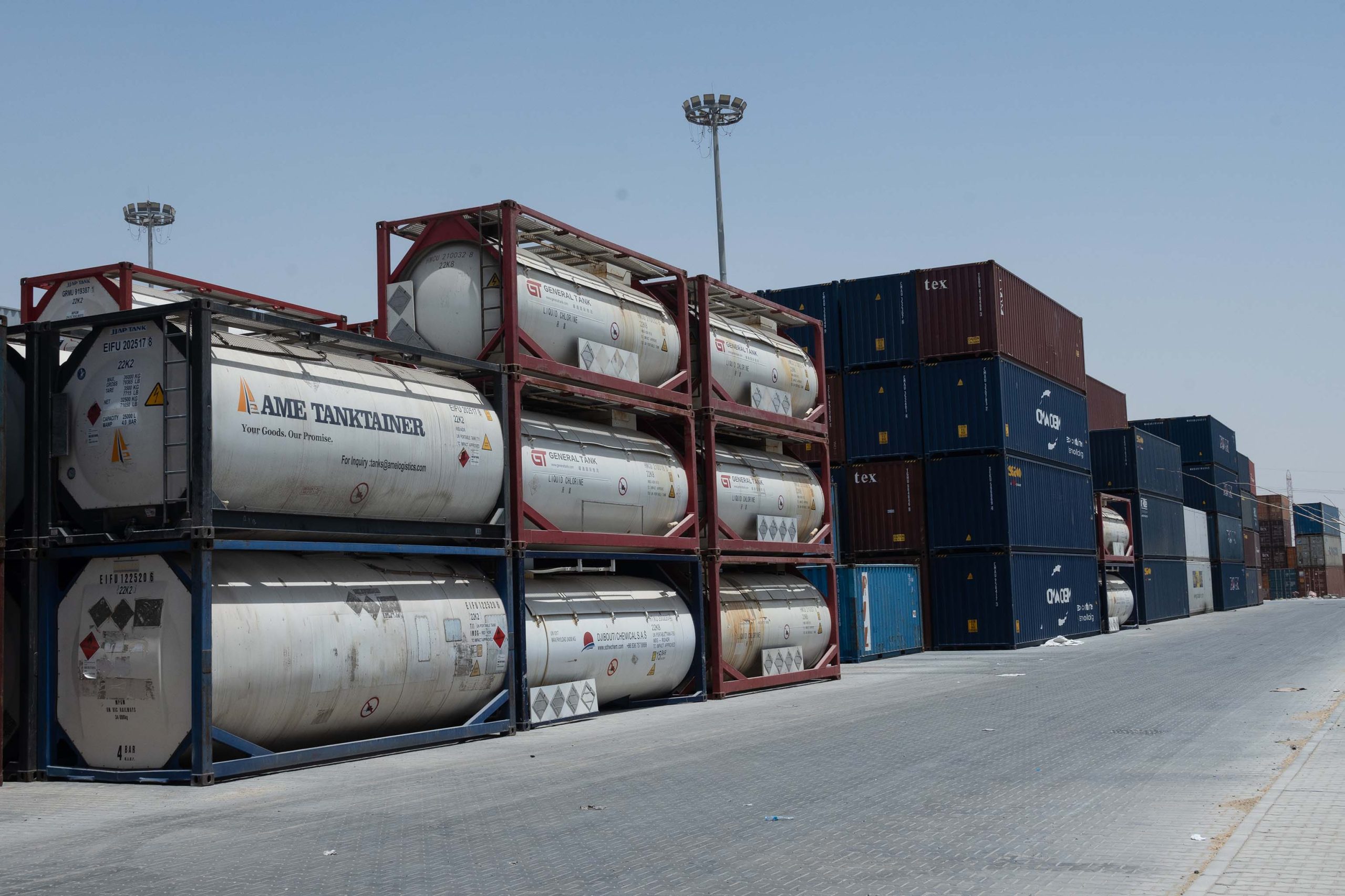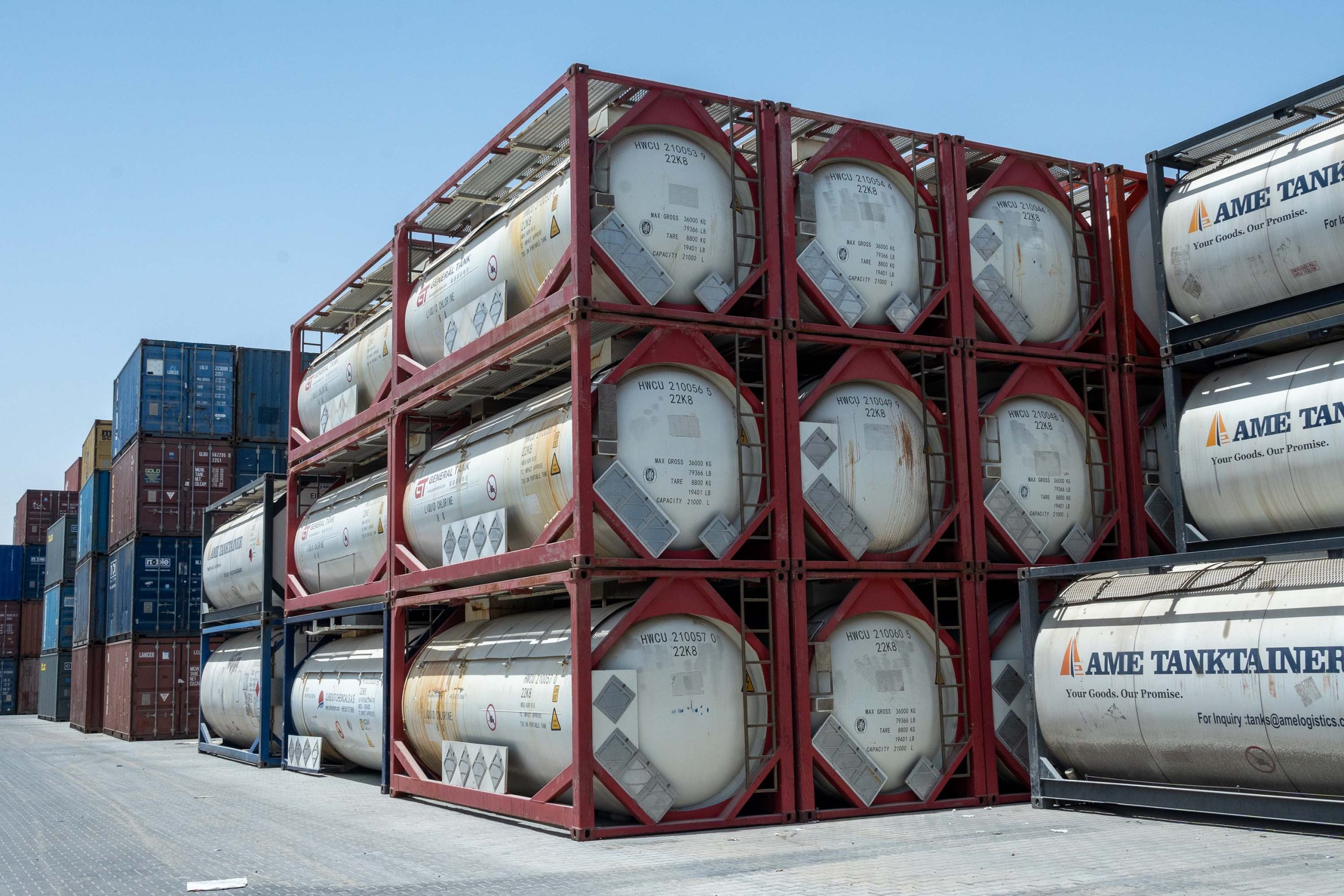Storage
Storing an ISO tank requires careful planning and adherence to safety standards to ensure the integrity of the tank and the safety of the surrounding environment. Here’s a general process for storing an ISO tank:
- Location Selection:
• Choose a suitable location for storing the ISO tank that meets regulatory requirements and is compatible with the type of cargo it contains or previously contained.
• Consider factors such as access, security, environmental impact, and proximity to other storage facilities. - Preparation:
• Ensure the storage area is properly prepared and free from hazards such as uneven terrain, loose debris, or potential sources of ignition.
• Install appropriate containment measures, such as berms or secondary containment systems, to prevent spills or leaks from reaching the environment. - Inspection and Maintenance:
• Inspect the ISO tank for any signs of damage, corrosion, or wear before storing it.
• Address any maintenance issues or repairs needed to ensure the tank is in good condition for storage.
• Document the condition of the tank and any maintenance activities performed. - Cleaning and Purging:
• Clean the tank thoroughly to remove any residues or contaminants that could pose a risk during storage.
• Purge the tank of any remaining gases or vapors to prevent the buildup of pressure and reduce the risk of ignition or explosion.
• Ensure all valves, vents, and fittings are closed and sealed securely. - Stabilization:
• Stabilize the ISO tank in a secure position to prevent it from tipping or shifting during storage.
• Use appropriate securing devices, such as straps, chains, or braces, to hold the tank in place. - Ventilation:
• Provide adequate ventilation around the ISO tank to prevent the accumulation of gases or vapors and minimize the risk of ignition.
• Ensure that vents and openings are clear and unobstructed to allow for natural airflow. - Security:
• Implement security measures to protect the ISO tank from theft, vandalism, or unauthorized access.
• Secure access points, such as valves and manholes, with locks or tamper-evident seals.
• Monitor the storage area regularly to detect any suspicious activity. - Monitoring and Inspection:
• Monitor the ISO tank periodically during storage to ensure it remains in good condition and there are no signs of leakage or damage.
• Conduct regular inspections according to regulatory requirements and industry standards.
• Document monitoring and inspection activities, including any findings or corrective actions taken. - Emergency Preparedness:
• Develop and implement an emergency response plan for handling spills, leaks, or other incidents involving the ISO tank.
• Provide appropriate training to personnel responsible for responding to emergencies.
• Maintain emergency response equipment and resources on site, such as spill containment kits and firefighting equipment. - Documentation and Record-Keeping:
• Maintain accurate records of the ISO tank’s storage history, including dates of storage, inspections, maintenance activities, and any incidents or emergencies.
• Keep documentation of regulatory compliance, permits, and certifications related to the storage of hazardous materials.



